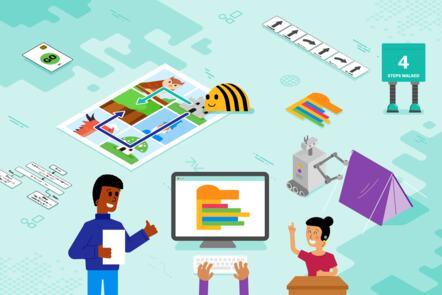MOOC List is learner-supported. When you buy through links on our site, we may earn an affiliate commission.

MOOC List is learner-supported. When you buy through links on our site, we may earn an affiliate commission.
This four-week course will help you become more confident in teaching programming to young children aged 5-11 years old. As well as developing your own understanding of programming, you’ll also investigate a range of strategies that you can use to help your pupils.
Delve into programming concepts
On this course you’ll learn about the key programming concepts of algorithms, sequence, repetition, selection, and variables.
You’ll experience a number of different programming languages suitable for young people, and use your new knowledge to modify and create programs in the block-based language Scratch.
The course will also introduce you to program design. You’ll learn about and experience all of the stages of program development from idea to running code.
By the end of the course, you’ll be able to design and code your own Scratch programs, as well as being able to support your young learners as they begin their coding journeys.
Links to the Teach Computing Curriculum
This course is created to align with the Teach Computing Curriculum (TCC), a free resource containing all the content you need to teach computing to children.
As well as undertaking several activities from the TCC during this course, you will use the knowledge you have gained to review a TCC teaching resource and adapt it for your learners’ needs.
What topics will you cover?
Week 1 - Introduction to programming
- What is programming?
- What’s an algorithm?
- Moving from an algorithm to code
Week 2 - Repetition
- Identifying patterns in tasks
- Implementing repetition
- Different types of repetition
Week 3 - Selection
- Conditions
- Implementing selection
- Controlling program flow with selection
Week 4 - Variables
- What are variables?
- How can variables be used in programs?
- Adapting a learning resource for your class
Learning on this course
You can take this self-guided course and learn at your own pace. On every step of the course you can meet other learners, share your ideas and join in with active discussions in the comments.
What will you achieve?
By the end of the course, you‘ll be able to...
- Explain the key programming concepts of sequence, repetition, selection, and variables
- Model these concepts using analogies from everyday life
- Develop Scratch programs that use these concepts
- Produce program designs including algorithms
- Apply the Use-Modify-Create and levels of abstraction framework in your lessons
- Modify learning resources to better fit the context in which you teach
Who is the course for?
This course is designed for educators of all types, in schools or informal settings. It has been designed to help you teach young children how to program.
What software or tools do you need?
All software used in this course is either free to download or can be accessed via the web. You will need access to Scratch 3, either online or installed on your computer. You’ll need to create a Scratch account to share and save your programs online.
MOOC List is learner-supported. When you buy through links on our site, we may earn an affiliate commission.
MOOC List is learner-supported. When you buy through links on our site, we may earn an affiliate commission.
